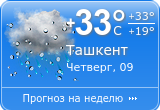According to one legend, one wise old man settled in this place. By hitting the ground, he created a draw-well and built the city.
According to scientists, the name of the city originated from the word Keykanik (Heykanik), and it was built in the first millennium BC. Keykanik is a city located on the banks of the great river.
The history of Khiva spans more than one hundred years, and it is closely connected with the history of Khorezm.
Century by century, cities were devastated by constant invasions of khans and revived again thanks to government reforms.
The city was mentioned the very first time in the chronicles of the 10th century. They described a small town located between Urgench and Merv on the Great Silk Road.
In the 18th century, the city, as one of the shopping centers, became the capital of the great Khorezm. Unfortunately, the capital was devastated by an endless feud between the neighboring states and tribes.
In the early 19th century, after the Kungrad Dynasty approved, Khiva became a cultural center again.
Ichan Kala is a kind of architectural and historical reserve that tells us all about the Central Asian feudal city.
The city is divided into two parts. The oldest part is the old city of Ichan-Kala. In the western part of the ancient city is Kunya-Ark. This is an old fortress with the preserved buildings of Akshih Baba Castle. The world-famous Sheikh Said Alauddin Mausoleum is located nearby too. At Juma mosque is the mausoleum of a poet and folk genius, Pakhlavan Mahmud. Its unique and original decorations, which were built in the 18th century, have been adorned on the walls and small caps. In approximately 1806, to the east gate of Palvan Darwaza was attached a gallery, which included a shopping arcade with the celestial domes.
In the ancient city of Ichan-Kala, other well-known ensembles and individual madrassas were formed. These are Amin Khan's madrassah, Sayyid Muhammad Rahim Khan II's madrasah, Kalta Minar minaret and many nameless minarets.
All buildings have the artistic principles and style of Khiva construction. Majolica, wood carving, miniature aivans,... over all these decorations, painstakingly worked by masters of applied arts. Above the town rise the celestial domes of beautiful mausoleums, which have the original layout of old minarets and madrassas. All the buildings in Khiva played a big role in its formation and development.
Our travel agency, "Orient Mice," is pleased to provide you with transport and professional guides who will show you not only Uzbekistan's capital, but also tell you amazing stories about the architectural monuments of Khiva.
According to scientists, the name of the city originated from the word Keykanik (Heykanik), and it was built in the first millennium BC. Keykanik is a city located on the banks of the great river.
The history of Khiva spans more than one hundred years, and it is closely connected with the history of Khorezm.
Century by century, cities were devastated by constant invasions of khans and revived again thanks to government reforms.
The city was mentioned the very first time in the chronicles of the 10th century. They described a small town located between Urgench and Merv on the Great Silk Road.
In the 18th century, the city, as one of the shopping centers, became the capital of the great Khorezm. Unfortunately, the capital was devastated by an endless feud between the neighboring states and tribes.
In the early 19th century, after the Kungrad Dynasty approved, Khiva became a cultural center again.
Ichan Kala is a kind of architectural and historical reserve that tells us all about the Central Asian feudal city.
The city is divided into two parts. The oldest part is the old city of Ichan-Kala. In the western part of the ancient city is Kunya-Ark. This is an old fortress with the preserved buildings of Akshih Baba Castle. The world-famous Sheikh Said Alauddin Mausoleum is located nearby too. At Juma mosque is the mausoleum of a poet and folk genius, Pakhlavan Mahmud. Its unique and original decorations, which were built in the 18th century, have been adorned on the walls and small caps. In approximately 1806, to the east gate of Palvan Darwaza was attached a gallery, which included a shopping arcade with the celestial domes.
In the ancient city of Ichan-Kala, other well-known ensembles and individual madrassas were formed. These are Amin Khan's madrassah, Sayyid Muhammad Rahim Khan II's madrasah, Kalta Minar minaret and many nameless minarets.
All buildings have the artistic principles and style of Khiva construction. Majolica, wood carving, miniature aivans,... over all these decorations, painstakingly worked by masters of applied arts. Above the town rise the celestial domes of beautiful mausoleums, which have the original layout of old minarets and madrassas. All the buildings in Khiva played a big role in its formation and development.
Our travel agency, "Orient Mice," is pleased to provide you with transport and professional guides who will show you not only Uzbekistan's capital, but also tell you amazing stories about the architectural monuments of Khiva.



